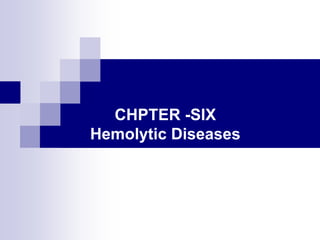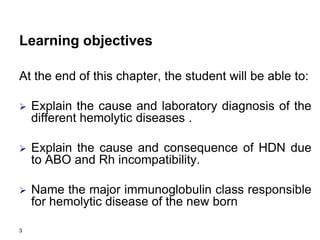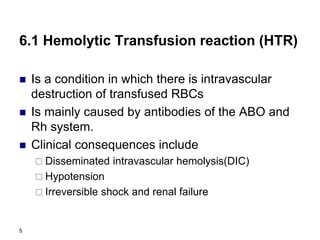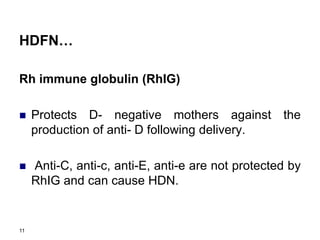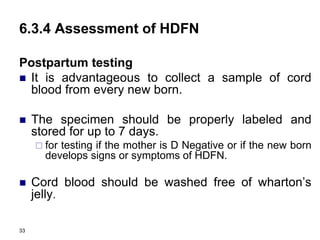This chapter discusses hemolytic diseases including hemolytic transfusion reaction, autoimmune hemolytic anemia, and hemolytic disease of the fetus and newborn. HDFN is caused by maternal IgG antibodies crossing the placenta and destroying fetal red blood cells. The major causes of HDFN are Rh and ABO incompatibility. RhIG is given to Rh-negative mothers to prevent Rh alloimmunization. Severe HDFN may be treated with exchange transfusions to reduce bilirubin levels and antibody concentrations in the infant.
